BLACK GLAZED-WARE
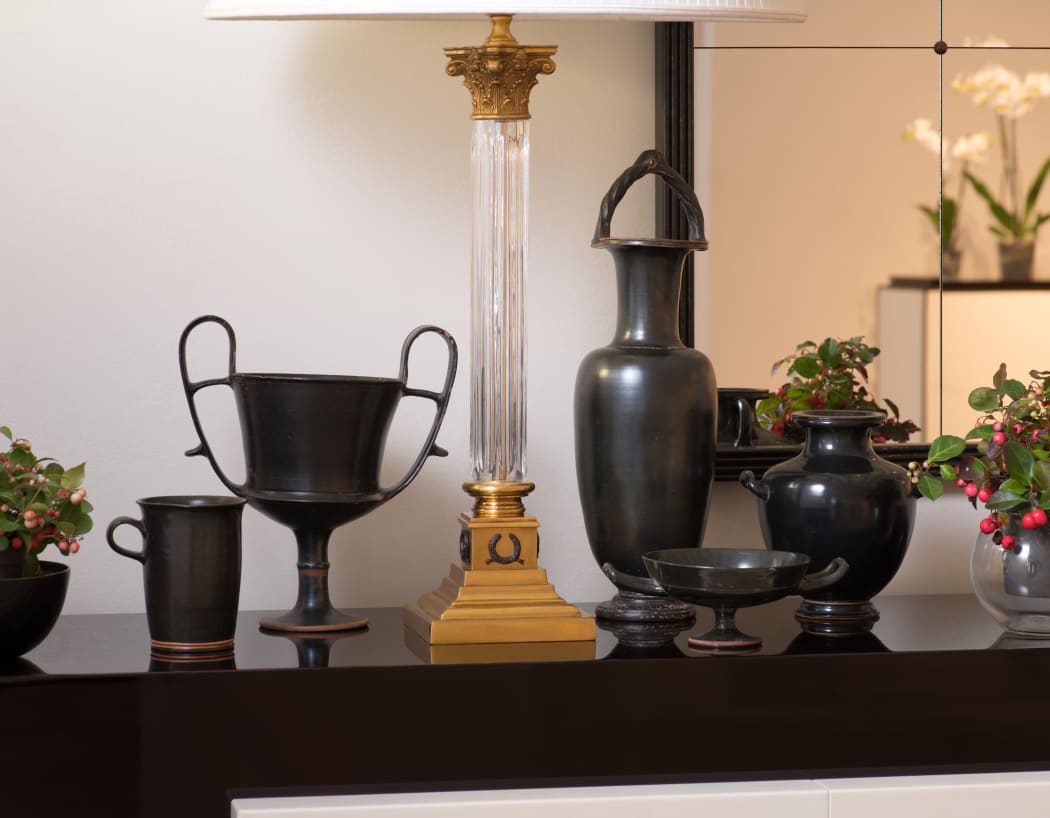
Black-glazed ware is the term used for ancient Greek pottery covered in a clay slip that turns a glossy black during the firing process. This varnish or glaze, was an outstanding feature of Attic pottery desired not only for its lustrous quality, but also for its astonishing durability.
Attic black-glazed vases were highly sought after both at home and in Italy, where the Etruscan and Greek colonists imported large quantities. However, their distribution was not limited to this region, with examples having been found in most Near Eastern countries, and in Europe ranging from the towns of the Black Sea, through Bulgaria to Germany and even in Southern France and Spain.

A GREEK BLACK-GLAZED POTTERY MUG
Circa 4th century BC
Height: 12 cm
£18,000
To imagine that the Attic glaze was somewhat of a secret, and unknown outside Attica, is a little misleading. However Athenian potters had the advantage of the composition and quality of their clay, as well as an unbroken tradition of ceramic production stemming from Mycenaean and Geometric pottery.
The glaze was used as early as 2000 BC by Cretan artists working towards the end of the Middle Minoan period. The same technique continued to be employed in the Mycenaean Bronze Age and survived into the resurgent Geometric period of Ancient Greece. After much manipulation and improvement it was eventually passed down to the great Athenian painters of the 6th and 5th centuries BC.
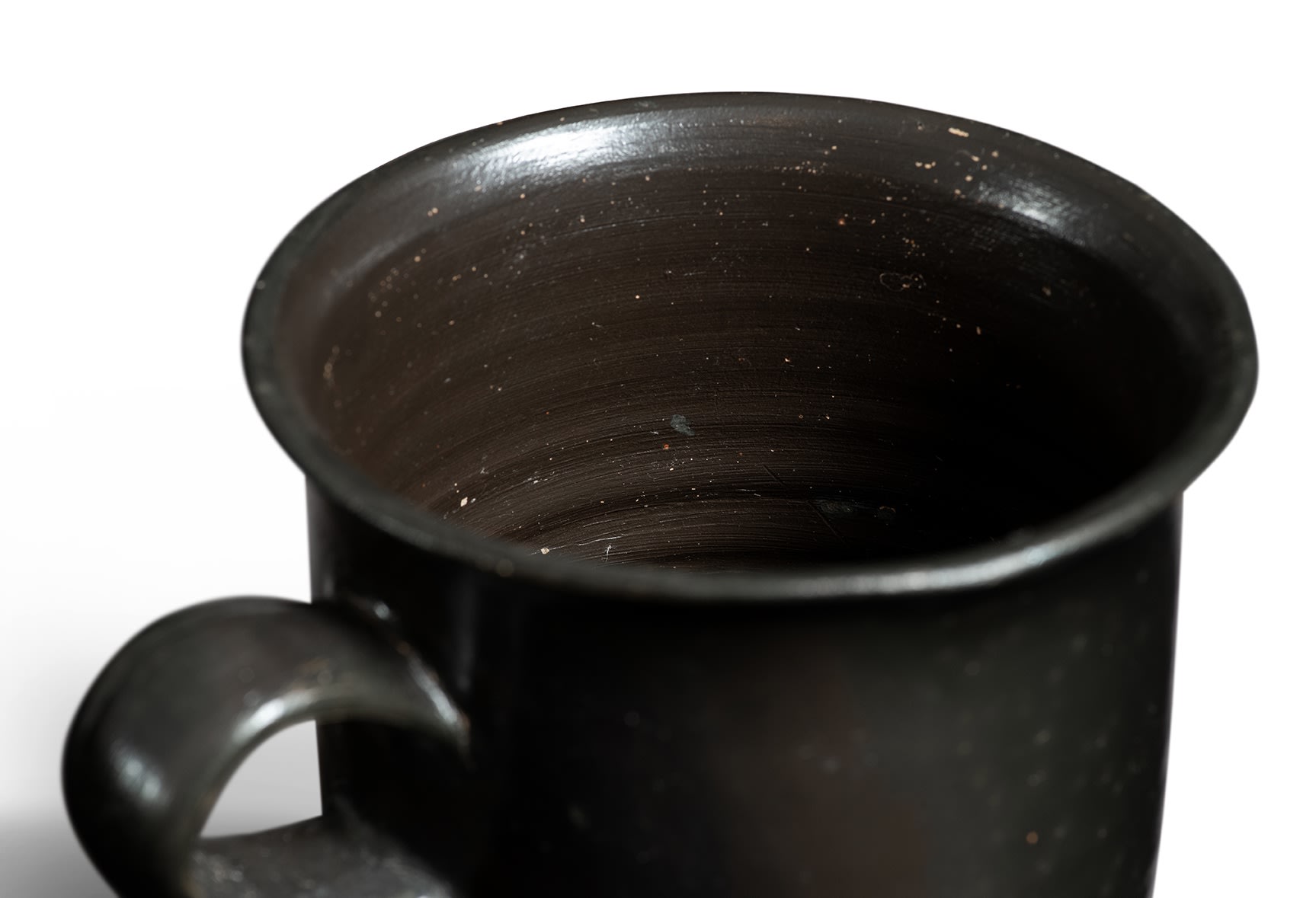
There is an assumption that vases with added figural decoration tend to be more elegant, finer in detail and that advances in quality were made in favour of figured over plain wares. However, it is most likely that black-glazed and figured were produced in the same workshops and that the divergence in development between the two rose out of different needs. For example, vase painters generally favoured vessels with a larger canvas, which potters did not have to provide for black-glazed ware. As a result the move from slender to broader vessels was slower to develop in black-glazed pottery. Black-glazed vessels were mainly used in the domestic sphere and therefore smaller, slender vases were preferable.
However, the word 'domestic' should not detract from the sheer beauty, quality and variety of black-glazed ware in the ancient world, and we hope to demonstrate this with the examples below.
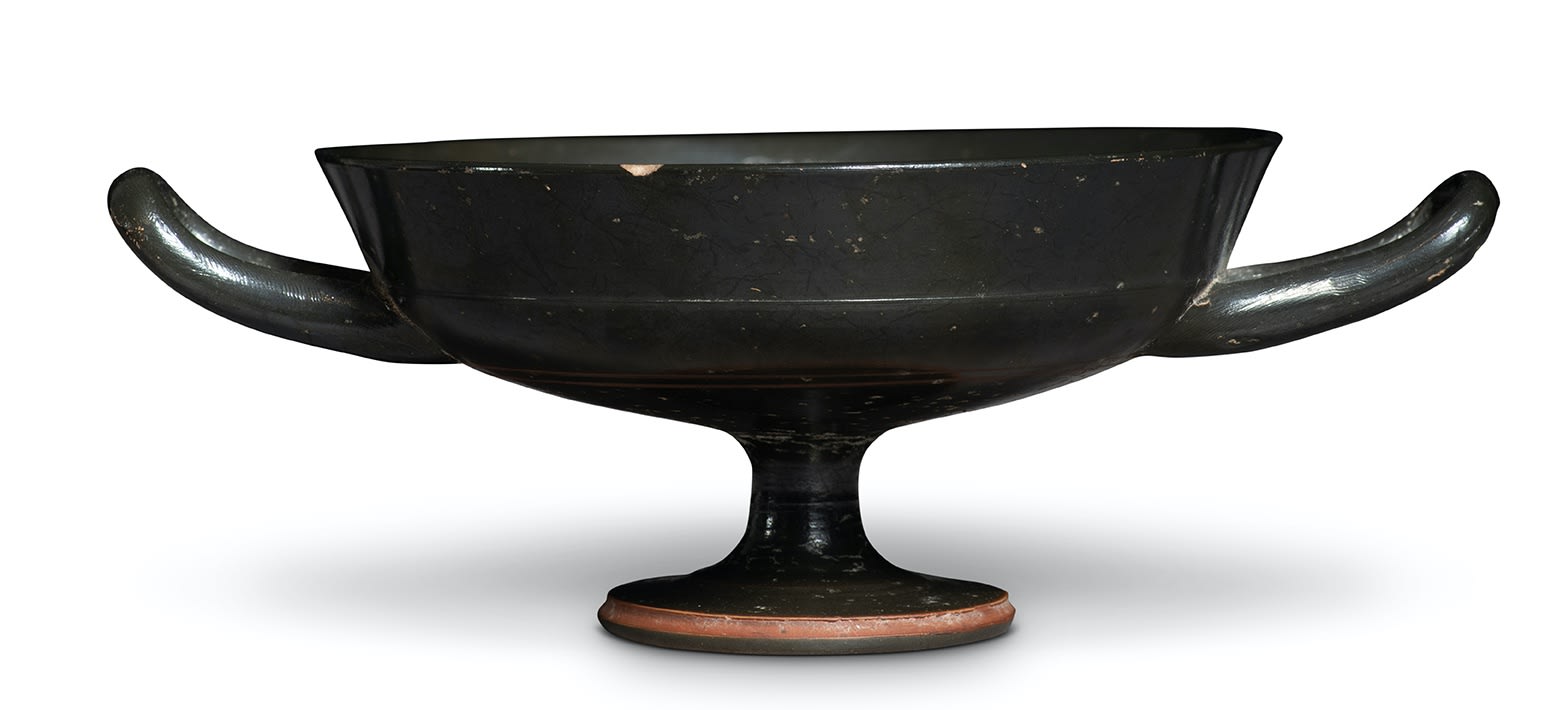
AN ATTIC BLACK-GLAZED VI CUP
Circa 470 BC
Diameter at rim: 14 cm
£18,000
The shape of this cup corresponds to Hansjörg Bloesch's Wiener Schalen: see H. Bloesch, Formen attischer Schalen von Exekias bis zum Ende des strengen Stils, Bern, 1940. This is a class of cups for which Sir John Beazley later abbreviated to Vi-cup.
According to Jasper Gaunt, 'characteristic of this Attic cup shape are the straight, inset lip, shallow bowl, two stout handles rising to the rim, the continuous profile from the bowl to the foot, and (generally) the concave edge of the foot'. For further discussion of the type, see: J. Gaunt, 'A Cup in Princeton', Record of the Art Museum, Princeton University, vol. 54, no. 1, 1995, pp. 30-38.

A GREEK BLACK-GLAZED POTTERY BAIL-AMPHORA
Campanian, circa 4th century BC
Height: 40.5 cm
£18,000
The bail-amphora is distinctive for its handle extending upwards. The workshops of the potters and painters of southern Italy produced vases for a Greek clientele established in coastal colonies such as Taranto, Metapontum and Cumae, as well as for the indigenous population. While most shapes in South Italian vase-painting have their origins in Attic models, the bail-amphora is indigenous and exclusively Campanian in origin.
Bail-amphorae are more commonly decorated in red figure with additional polychrome. This example is an elegant and minimalist purely black-glazed form.
Black-glazed vases were not completely without decoration, and could be enlivened in different ways using various different techniques: reserving, added clay, gilding, ribbing, incising and stamping.
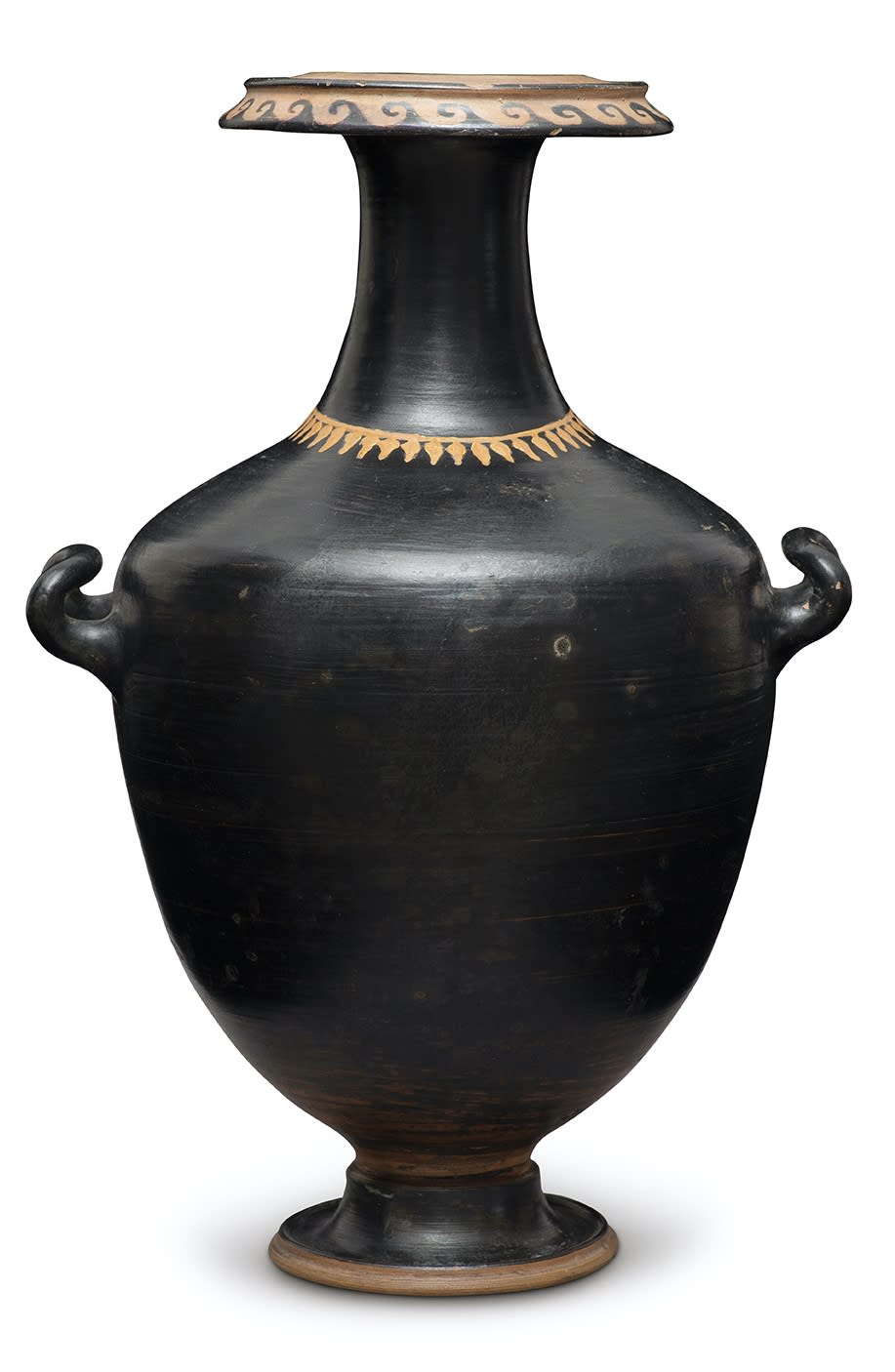
A GREEK BLACK-GLAZED POTTERY HYDRIA
South Italy, circa 4th century BC
Height: 28 cm
£6,500
The use of added clay, which was set onto the smooth surface of the vase and usually overlaid with gilt, is first found in Attica in the late Archaic period and increased in popularity from then on. The technique was first employed on red and black-figure vases to give prominence to the details of scenes, such as on jewellery, phialai and armour. Gilding on black-glaze is less frequent and only seems to become popular in the 4th century BC, in particular on larger vases such as hydrai and kraters. Added clay decoration usually consisted of ivy garlands and berries, as can be found on the Kallos hydria above.
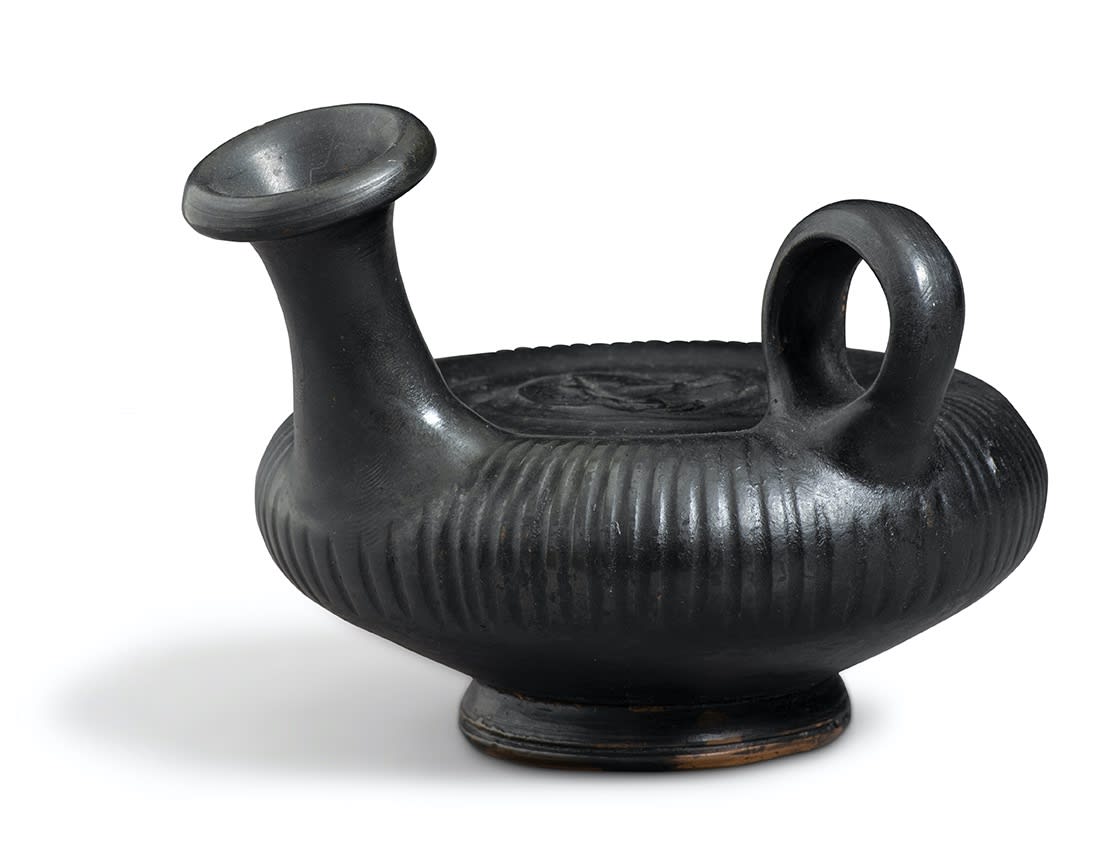
A GREEK BLACK-GLAZED POTTERY GUTTUS
South Italy, circa 4th century BC
Height: 12 cm
£4,500
This characterful guttus demonstrates two of the techniques employed by potters in black-glazed ware, ribbing and the central decorative stamp on top of the vessel.
Gutti were used as vessels for water or oil, which would be poured out in drops (hence the name from the Latin gutta, to drop), during offerings and at other occasions. The shape is distinctive to Magna Graecia, with a closed body, a small handle on the shoulder and a tall angled spout.

A LARGE GREEK BLACK-GLAZED NESTORIS
South Italy, mid-4th century BC
Height: 48.9 cm
£30,000
Nestorides, primarily used as wine vessels, are an unusual and rare form. Similarly to bail-amphorai, nestorides were indigenous to and exclusively South Italian in origin.
The nestorides produced in Apulia and Lucania (regions in southern Italy) are divided into three categories, according to the evolution of the shape of the body and the handles. They are distinctive with two sets of handles: a pair of high arching handles as well as practical horizontal handles at the belly: A.D. Trendall, Red Figure Vases of South Italy and Sicily, London, 1989, pp. 10-11.
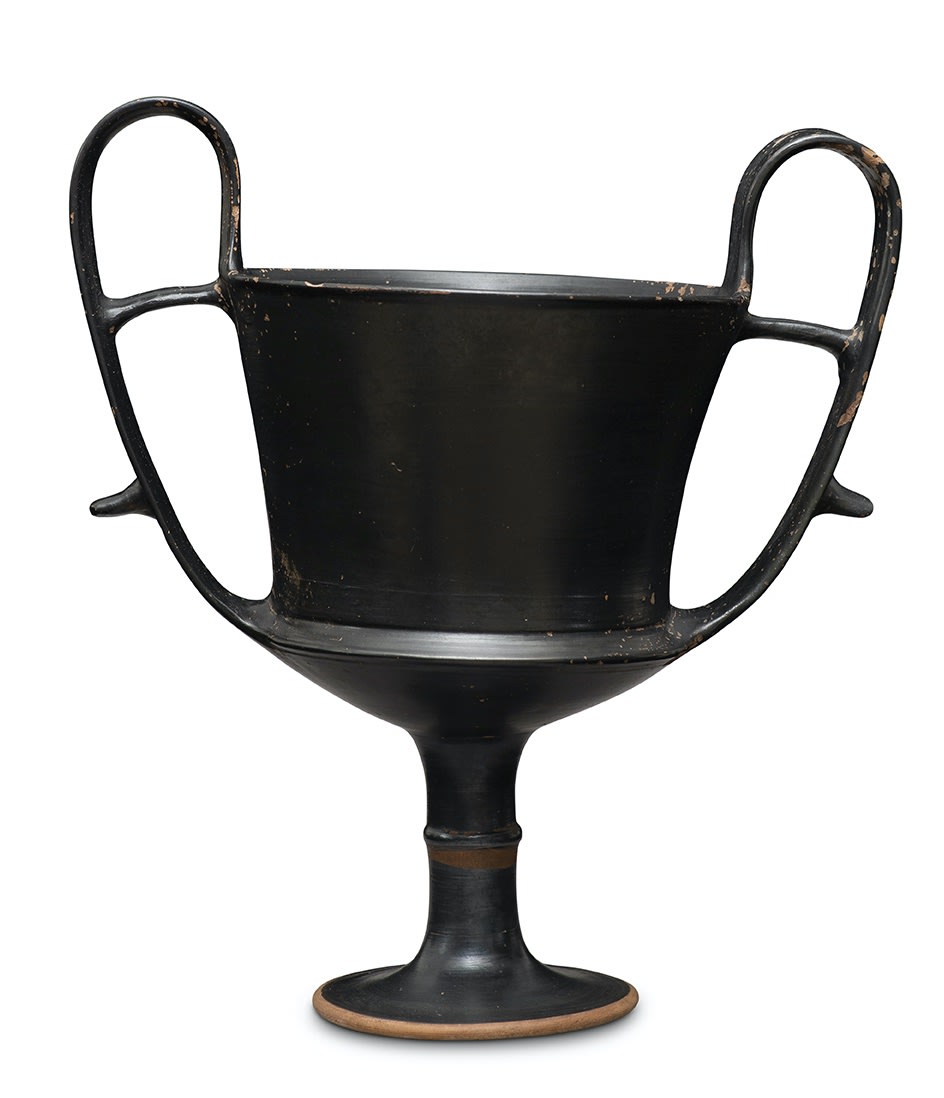
A GREEK BLACK-GLAZED POTTERY KANTHAROS
Boeotian, circa 450 BC
Height: 26 cm
£4,500
The kantharos was a type of ancient Greek drinking cup. There are three types of kantharoi, and this particular example is of Type A. The iconic Type A is characterised by its distinctive and impressive high-arching handles. Kantharoi originated in the 8th century BC, and the form was most likely inspired by metal examples.
The kantharos was an attribute of Dionysus, the ancient Greek god of wine. In Attic vase-painting Dionysus is often depicted carrying a kantharos within Dionysiac and ritual scenes. See for example an Attic red-figure kylix by Douris, now in the Museum of Fine Arts, Boston, inv.no. 00.499: Beazley Archive Pottery Database no. 205135.